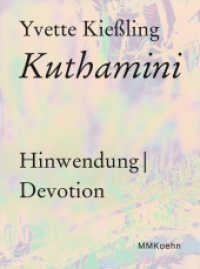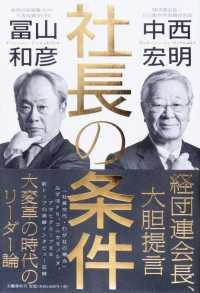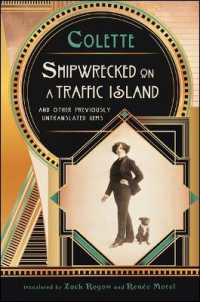Full Description
The first comprehensive study on the role of Italian fashion and Italian literature, this book analyzes clothing and fashion as described and represented in literary texts and costume books in the Italy of the 16th and 17th centuries. Writing Fashion in Early Modern Italy emphasizes the centrality of Italian literature and culture for understanding modern theories of fashion and gauging its impact in the shaping of codes of civility and taste in Europe and the West. Using literature to uncover what has been called the 'animatedness of clothing,' author Eugenia Paulicelli explores the political meanings that clothing produces in public space. At the core of the book is the idea that the texts examined here act as maps that, first, pinpoint the establishment of fashion as a social institution of modernity; and, second, gauge the meaning of clothing at a personal and a political level. As well as Castiglione's The Book of the Courtier and Cesare Vecellio's The Clothing of the Renaissance World, the author looks at works by Italian writers whose books are not yet available in English translation, such as those by Giacomo Franco, Arcangela Tarabotti, and Agostino Lampugnani. Paying particular attention to literature and the relevance of clothing in the shaping of codes of civility and style, this volume complements the existing and important works on Italian fashion and material culture in the Renaissance. It makes the case for the centrality of Italian literature and the interconnectedness of texts from a variety of genres for an understanding of the history of Italian style, and serves to contextualize the debate on dress in other European literatures.
Contents
Part I The Cultures of Fashion; Chapter 1 Moda and Moderno; Chapter 2 The Book of the Courtier and the Discourse on Fashion: Sprezzatura, Gender, "National Identity"; Part II The Fabric of Cities: Nations, Empire in Costume Books by Cesare Vecellio and Giacomo Franco; Chapter 3 Mapping the World: Dress in Cesare Vecellio's Costume Books (1590, 1598); Chapter 4 -1614); Part III Beyond Sprezzatura: Fashion as Excess; Chapter 5 Sister Arcangela Tarabotti: Hair, Wigs and other Vices; Chapter 6 La Moda and its Technologies: Agostino Lampugnani's La Carrozza da nolo, ovvero del vestire e usanze alla moda (The rented carriage or of clothing and fashionable habits, 1648-1650);








